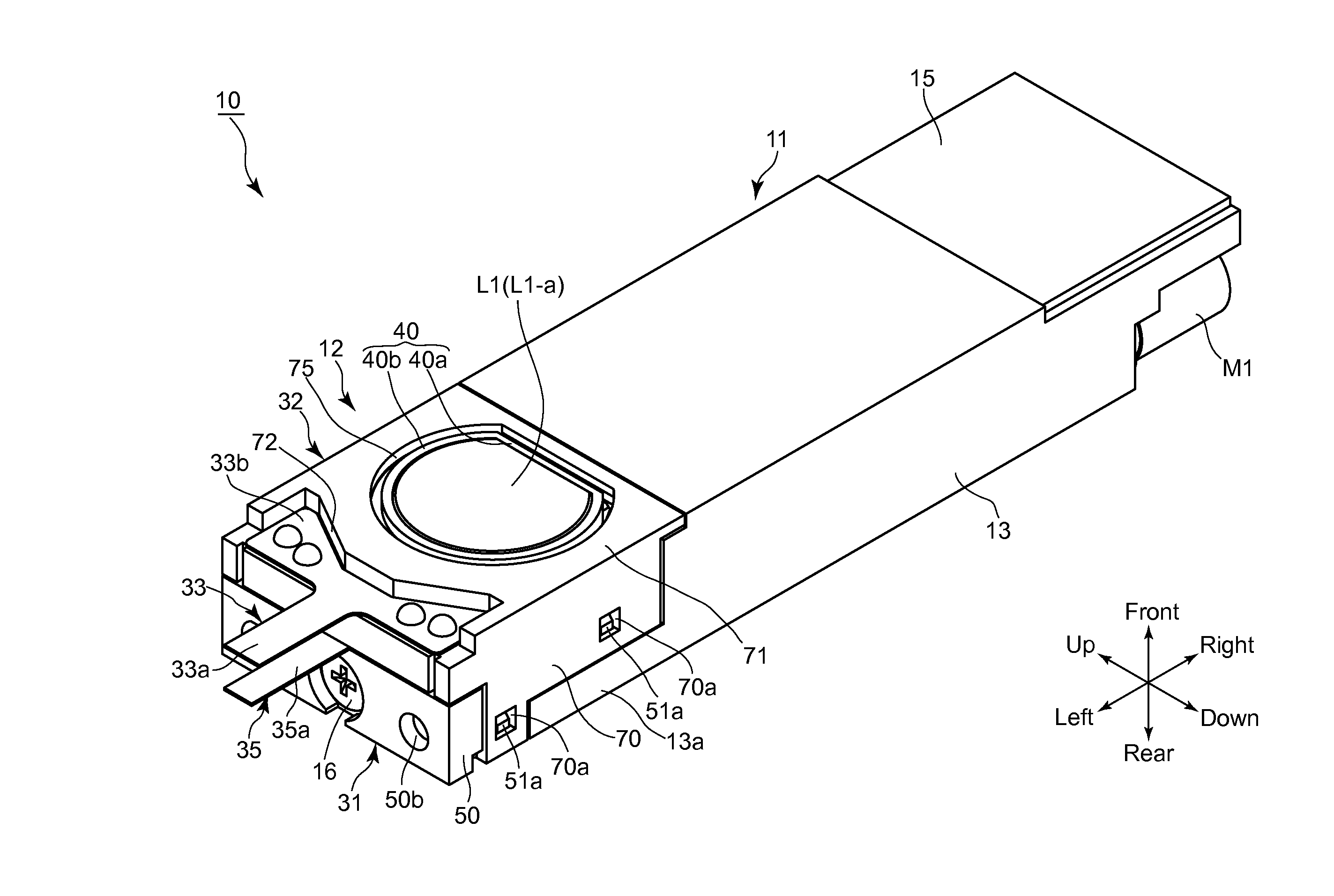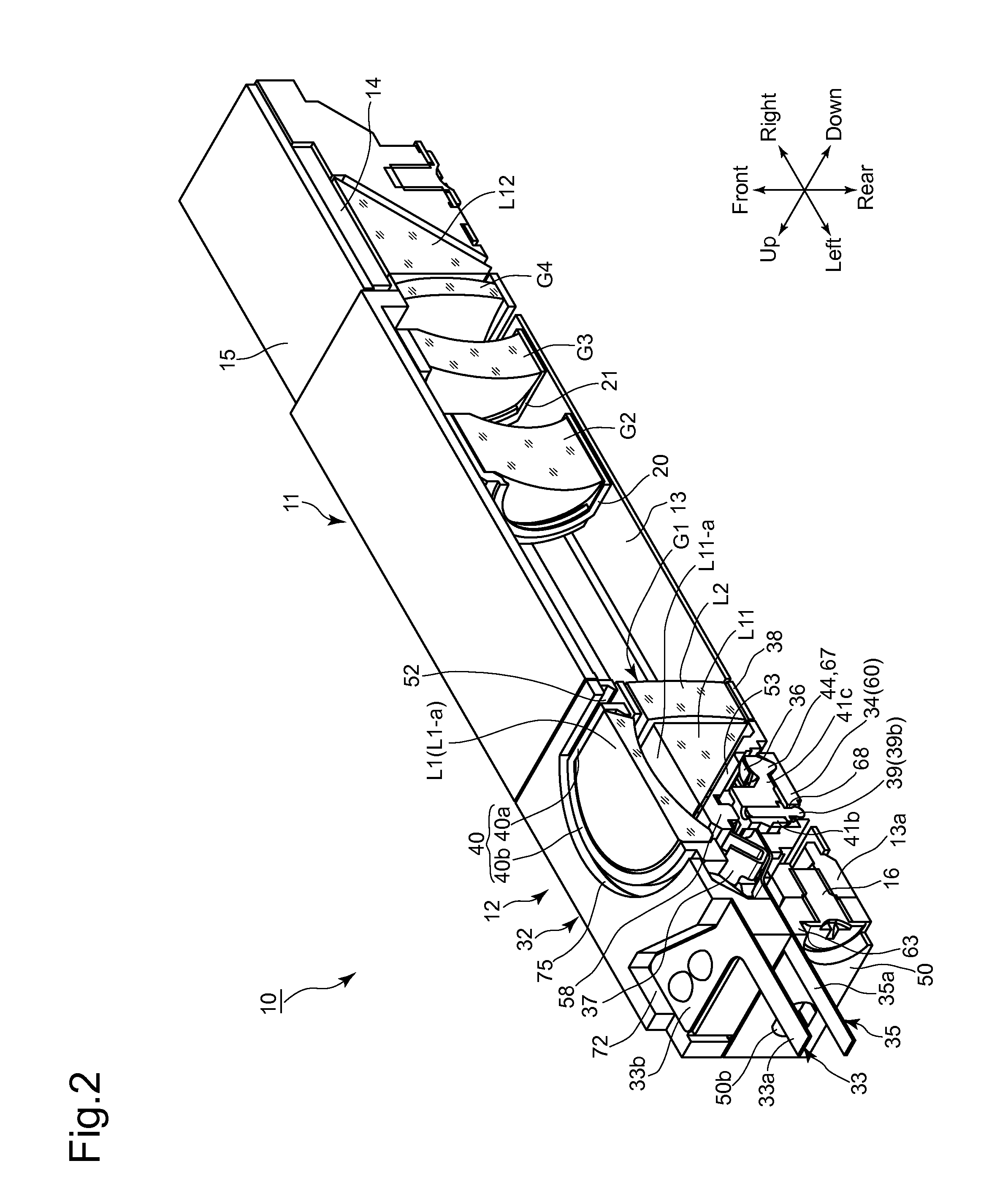Imaging apparatus
a technology apparatus, which is applied in the field of image stabilizing system, can solve the problems of difficult to secure a sufficient space, difficult to achieve the effect of ensuring a sufficient space, and small siz
- Summary
- Abstract
- Description
- Claims
- Application Information
AI Technical Summary
Benefits of technology
Problems solved by technology
Method used
Image
Examples
first embodiment
[0057]An embodiment (first embodiment) of an imaging unit (imaging apparatus) 10 according to the present invention will be discussed below with reference to FIGS. 1 through 21. In the following descriptions, forward and rearward directions, leftward and rightward directions, and upward and downward directions are determined with reference to the directions of the double-headed arrows shown in the drawings. The object side corresponds to the front side. As shown by the outward appearance of the imaging unit 10 in FIG. 1, the imaging unit 10 has a laterally elongated shape which is slim in the forward / rearward direction and elongated in the leftward / rightward direction.
[0058]As shown in FIGS. 2, 4, 6 and 7, an imaging optical system of the imaging unit 10 is provided with a first lens group (front lens group) G1, a second lens group (rear lens group) G2, a third lens group (rear lens group) G3 and a fourth lens group (rear lens group) G4. The first lens group G1 is provided with a fi...
fourth embodiment
[0141]Although the position of one of the two permanent magnets, i.e., the permanent magnet 382, is offset in the imaging unit shown in FIGS. 26 and 27, the other permanent magnet 81 can also be offset in a similar manner to the permanent magnet 382.
[0142]Although one permanent magnet is offset in one direction in the third and fourth embodiments of the imaging units, it is also possible to apply both the offset arrangement shown in the third embodiment of the imaging unit and the offset arrangement shown in the fourth embodiment of the imaging unit to a single permanent magnet.
[0143]Although the offset of the permanent magnet(s) of the actuator has been illustrated in each of the third and fourth embodiments of the imaging units, the presence or absence of an offset arrangement for each of the coil (s) and Hall sensor (s) is optional according to the presence or absence of an offset arrangement of the permanent magnet (s).
[0144]As a first combination, it is possible for straight li...
PUM
 Login to View More
Login to View More Abstract
Description
Claims
Application Information
 Login to View More
Login to View More - R&D
- Intellectual Property
- Life Sciences
- Materials
- Tech Scout
- Unparalleled Data Quality
- Higher Quality Content
- 60% Fewer Hallucinations
Browse by: Latest US Patents, China's latest patents, Technical Efficacy Thesaurus, Application Domain, Technology Topic, Popular Technical Reports.
© 2025 PatSnap. All rights reserved.Legal|Privacy policy|Modern Slavery Act Transparency Statement|Sitemap|About US| Contact US: help@patsnap.com



